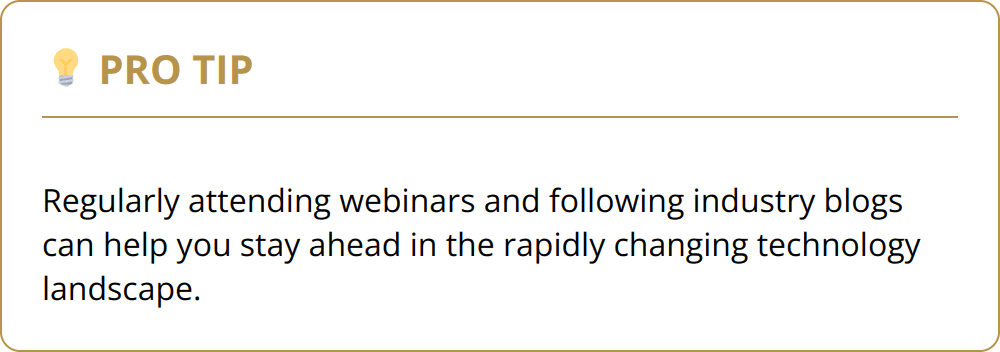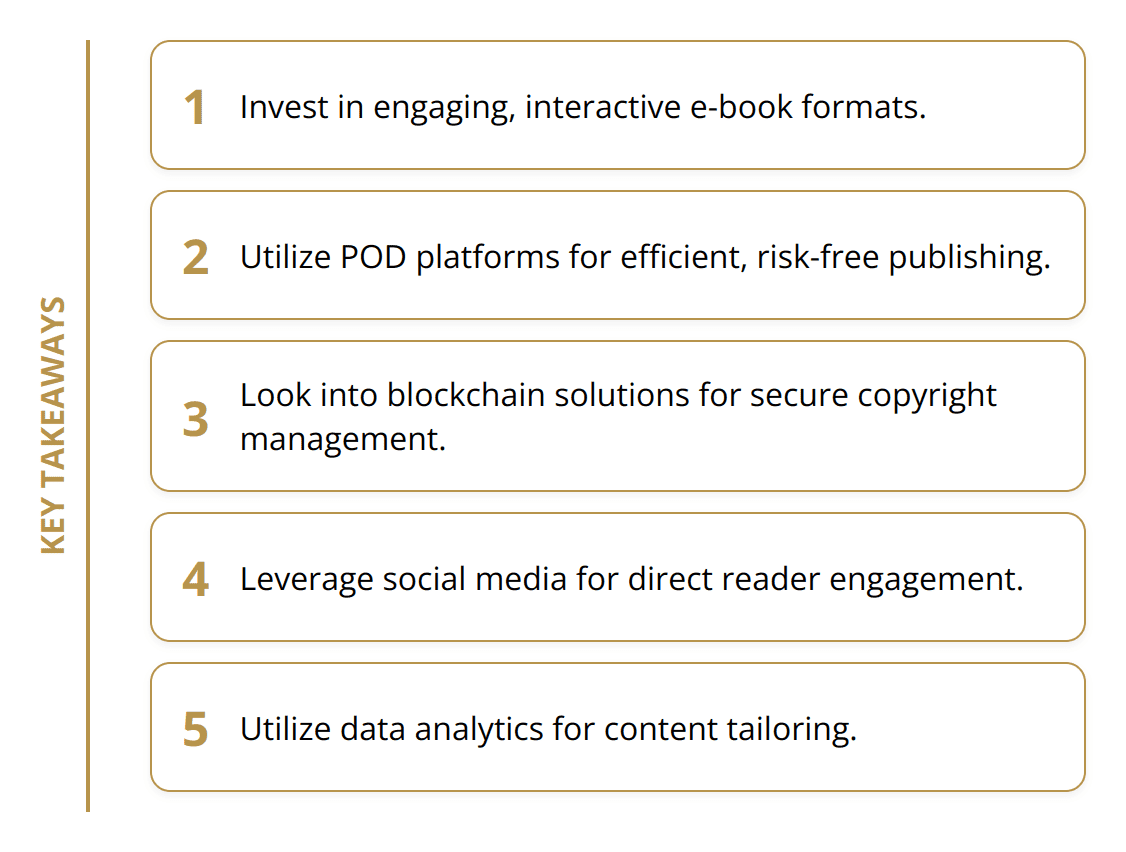The landscape of publishing is rapidly evolving, driven by a slew of innovative technologies. At Beverly Hills Publishing, we’re at the forefront of adapting these changes, ensuring both authors and readers benefit from the latest advancements.
From e-books to blockchain, we’re witnessing a revolution that’s reshaping how content is created, distributed, and consumed. This post explores the cutting-edge technologies transforming the publishing industry and the effects they have on authors, publishers, and readers alike.
Emerging Publishing Technologies
The publishing landscape is continuously being transformed by innovative technologies, making it an exciting time for authors, publishers, and readers. Among these advancements, three technologies are particularly noteworthy: e-books and interactive digital content, print-on-demand services, and blockchain for copyright management. Each of these technologies presents unique opportunities and challenges but together, they are shaping the future of publishing.
E-books and Interactive Digital Content have significantly altered readers’ expectations and consumption patterns. Not just confined to text, digital content now includes interactive elements like audio, video, and quizzes, making reading an immersive experience. Authors and publishers need to leverage e-books to reach a wider audience, especially considering that ebook sales surpassed $956 million in revenue, driven largely by Amazon’s Kindle platform. The key here is to create engaging, multi-sensory content that stands out in a crowded digital landscape.
Print-on-Demand (POD) Services offer a solution to the risky business of bulk printing. By allowing for single-copy printing at a time, POD minimizes overheads and reduces unsold inventory risk. The beauty of POD lies in its flexibility; publishers and authors can test the market with minimal financial commitment. Additionally, POD caters to niche markets by making it financially viable to publish specialized content for smaller audiences. For anyone looking to dive into publishing with limited upfront costs, exploring POD platforms is a must.
Blockchain for Copyright Management introduces a level of security and transparency previously unattainable in the publishing industry. By recording copyrights in a decentralized ledger, blockchain ensures that intellectual property rights are protected and easily verifiable, which is vital in a digital age where content can be indiscriminately copied and distributed. Authors and publishers should consider blockchain solutions to safeguard their work and ensure fair compensation for digital content usage.

Actionable Tips:
- Engage with Digital Content: Invest in creating interactive and engaging e-book formats.
- Explore POD Services: Utilize POD platforms for efficient, risk-free publishing.
- Adopt Blockchain Technology: Look into blockchain solutions for secure copyright management.
The adoption of these technologies is not just optional but necessary for those looking to stay relevant and competitive in the ever-evolving publishing industry. As we move forward, understanding and leveraging these technologies will be key to unlocking new possibilities and reaching a global audience.
Streamlining Publishing
The emergence of technology in the publishing world has not only transformed how content is created and distributed but also streamlined the publishing process itself. The result is a more efficient, less time-consuming route from manuscript to market. For authors and publishers, this transformation means freeing up resources that can be redirected towards craft and marketing efforts.
Technology has made editing and formatting simpler with software that automates mundane tasks, allowing authors to focus on refining their narrative without the cumbersome manual tweaking of text and layout. Platforms like Scrivener and ProWritingAid are game-changers, speeding up the editing phase and ensuring consistency across documents.
Moreover, distribution channels are far broader and more accessible due to digital platforms. Authors are no longer limited to the geographical reach of physical bookstores. Online marketplaces and e-book platforms provide a global audience at the click of a button, opening up unprecedented opportunities for niche topics and independent authors. The trend towards e-books and audiobooks indicates a shift in consumption habits, with digital sales continually rising. For instance, digital book sales are reaching new heights, showing a clear preference towards convenient formats.

Print-on-Demand (POD) services have significantly reduced financial barriers to entry for new authors. By allowing books to be printed as needed, POD eliminates the risk of unsold stock and upfront costs. This democratization of publishing encourages a diversity of voices and stories that might not have found a platform otherwise.
Expanding Reach and Accessibility
Digital platforms have undeniably expanded the reach of authors and publishers, allowing them to connect with readers across the globe instantly. Social media and content marketing have opened new avenues for promotion, enabling authors to engage directly with their audience. Tools like email newsletters and platforms like BookBub offer targeted outreach to readers based on their interests, leading to more effective marketing strategies.
Accessibility has also seen significant improvement. Features like adjustable text sizes and read-aloud functions make books accessible to a wider audience including those with visual impairments. This inclusivity not only broadens the market but also ensures that everyone has the opportunity to enjoy literature.
Enhancing Reader Engagement
Innovative technologies aren’t just changing the way books are made and sold; they’re also transforming the reading experience itself. Interactive ebooks, which include elements such as hyperlinks, videos, and quizzes, offer a level of engagement beyond traditional text. This multimedia approach caters to modern readers who often seek more dynamic and interactive content.
Furthermore, data analytics offer insights into reader preferences, allowing authors and publishers to tailor their content more effectively. Understanding which chapters capture readers’ attention or which themes resonate can inform future projects, creating a feedback loop that enhances reader satisfaction.
In conclusion, leveraging these technologies not just optimally but creatively is essential for authors and publishers aiming to stay ahead in the ever-evolving world of publishing. Employing tactics like mastering social media marketing, utilizing SEO for your content, or exploring the vast possibilities of interactive digital books can significantly elevate your work’s visibility, engagement, and success.
Navigating Technological Hurdles
The evolution of publishing through technology is revolutionary, positively impacting production, distribution, and consumption patterns. However, this transformation brings its own set of challenges that authors and publishers must effectively navigate to stay relevant and successful.
Keeping Up with Rapid Changes
The pace at which technology evolves can be overwhelming. What’s cutting-edge today might be obsolete tomorrow. Authors and publishers need to stay informed and adaptable. Regularly attending industry webinars, following relevant blogs, and participating in publishing forums can keep you updated. Building a network with tech-savvy individuals in the industry can also provide insights into emerging trends and tools.

Balancing Digital and Physical Books Demand
While eBooks and audiobooks have surged in popularity, the demand for physical books remains strong. The key is to understand your audience’s preferences and cater to both digital natives and traditional readers. Conducting reader surveys can offer valuable data on your audience’s reading habits. Additionally, hybrid publishing models, which include both digital and print formats, can help satisfy diverse consumer demands without alienating any segment of your audience.
Addressing Copyright and Piracy Issues
Copyright infringement and piracy are real threats in the digital age. Strong copyright management is essential for protecting intellectual property. Blockchain technology provides a promising solution for secure, transparent copyright management. Moreover, employing digital rights management (DRM) tools can prevent unauthorized distribution of digital content. It’s important to educate yourself about these technologies and invest in robust copyright protection strategies.
Actionable Tips:
- Stay engaged with industry updates
- Leverage surveys for audience insights
- Explore hybrid publishing models
- Invest in copyright protection technologies
While these challenges may seem daunting, they also offer an opportunity for innovation and growth. Publishers and authors who can adeptly navigate these hurdles will not only survive but thrive in the digital landscape.
Wrapping Up
As we navigate the transformative landscape of publishing, it’s imperative to acknowledge and adapt to the revolutionary technologies reshaping this industry. E-books and interactive digital content, print-on-demand services, and blockchain for copyright management have emerged as pivotal innovations. These technologies are not merely trends but catalysts for change, enabling authors and publishers to meet the evolving demands of readers while also offering new avenues for creative expression and market expansion.

At Beverly Hills Publishing, we understand the importance of these advancements in fostering author success and enhancing reader engagement. Embracing change is not an option but a necessity to thrive in this dynamic environment. The future of publishing holds immense potential, driven by continuous innovation and a commitment to adapting to digital transformation. As we look ahead, the integration of AI, machine learning, and enhanced accessibility features are set to offer even more opportunities for authors to connect with their audience in meaningful ways.
The journey of publishing is one of constant evolution, and staying at the forefront of technological adoption is key to unlocking new possibilities. Authors and publishers who are willing to embrace these changes and leverage new technologies will undoubtedly find themselves better positioned to navigate the complexities of the modern publishing landscape. As we continue to explore and implement these innovations, the goal remains clear: to revolutionize the way stories are told, shared, and experienced around the globe.
In conclusion, the future of publishing is bright, marked by an ever-expanding horizon of opportunities for authors to share their unique voices and for readers to access diverse content. By staying informed, adaptable, and open to exploring new technologies, we can all contribute to shaping a vibrant, inclusive, and dynamic publishing ecosystem. The path forward is exciting, and at Beverly Hills Publishing, we are committed to leading the charge, empowering authors to achieve unparalleled success and leaving a lasting impact on the world of publishing.















































































































































































































































